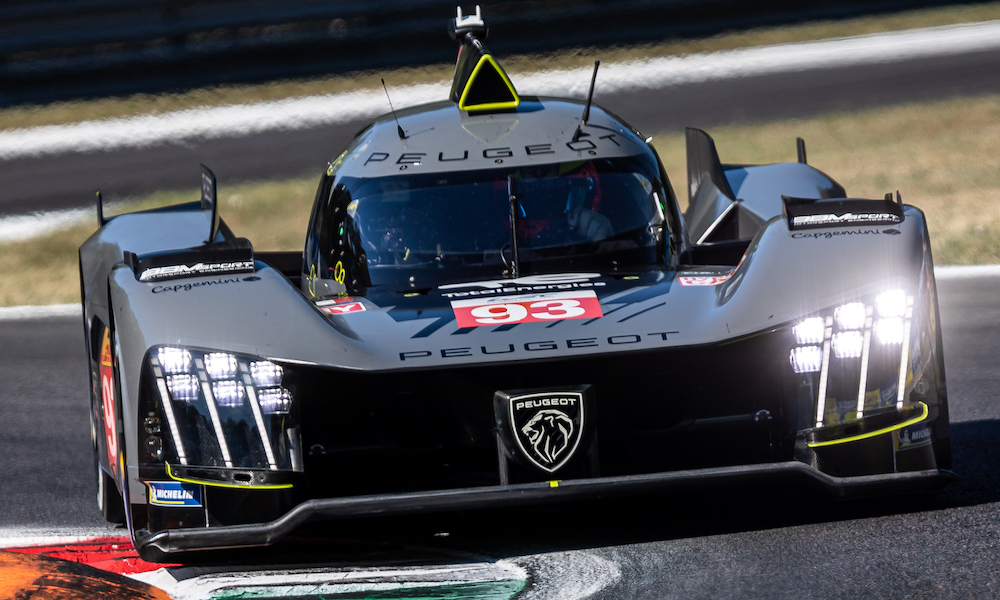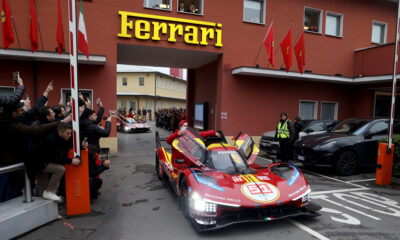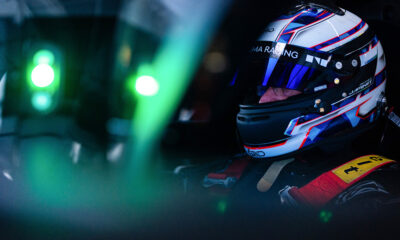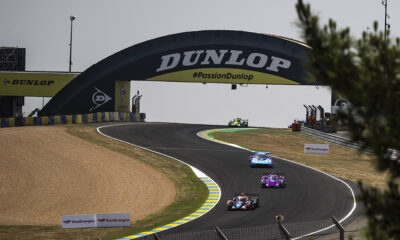Peugeot “learned a lot” during the race debut of its 9X8 LMH car at Monza, according to the French manufacturer’s FIA World Endurance Championship technical director.
Despite a challenging afternoon, Olivier Jansonnie declared after the six-hour race that it was “mission accomplished” for Peugeot, which went into the event aiming to learn as much as possible about its new hybrid-powered prototype in competitive conditions.
Both Peugeot 9X8s encountered significant problems and underwent trips to the garage, with only the No. 94 car of Gustavo Menezes, James Rossiter and Loic Duval reaching the checkered flag in 33rd place, at a loss of 25 laps.
The sister No. 93 car of Mikkel Jensen, Paul di Resta and Jean-Eric Vergne, which started from the back of the grid after a stoppage in qualifying, retired due to a melange of technical issues that occurred in the early stages.
“It was a hard race for us,” Jansonnie told Sportscar365 during a debrief with reporters.
“We came here to learn, and we learned a lot. It was difficult from the start, and from qualifying yesterday night. One car, the No. 93, had some technical issues from the very start.
“Car No. 94 competed quite well for the first two hours at least. Then the safety car came at exactly the wrong moment for us, and the issues on top of it.
“Overall I think the performance was there. We have shown some quite good lap times, so we are happy with that.
“We knew that we have a lot to learn, and that was very clear. I think we somehow matched our targets, coming here to learn.”
Jansonnie said that the No. 93 car encountered several issues “at the same time” that made it difficult to define what exactly caused Jensen to stop at the exit of Ascari shortly after the 20-minute mark. At the time, the Danish driver reported a loss of power.
Jansonnie indicated that Peugeot doesn’t yet have the full picture of what happened, offering the general diagnosis of a problem with the “overall car system”.
Stellantis motorsport director Jean-Marc Finot said during the race that it was related to the 2.6-liter V6 engine’s turbo boost pressure, while Jansonnie described this as “one of the issues”.
“We don’t know if this is the issue, or the consequence of another issue,” was Jansonnie’s review.
The No. 94 car ran within range of the other Hypercar entries early on through Duval but tailed off when it started to experience overheating in the drivetrain department, which Peugeot attributed to a piece of debris getting stuck inside the vehicle.
This resulted in two lengthy pit stops that cost almost 40 minutes, while Menezes also stopped the car between the Lesmos in the penultimate hour.
Monza marked the first time that the Peugeot 9X8 has shared a track with other cars.
“No. 94 had a much better race overall,” Jansonnie said. “We just had to stop some times for a temperature issue in the car.
“Here we are clearly learning about racing in traffic. [There was] some debris flying around and this was a new experience for us. It’s part of what we’re coming to learn.”
Despite being slower than its Hypercar class rivals at Monza, Peugeot felt satisfied by its lap time performance and will now focus on improving its reliability ahead of the 6 Hours of Fuji in September.
The fastest race lap from the team was a 1:38.364 from Duval, which stood 1.7 seconds off the Glickenhaus 007 Pipo and just over a half a second down on the quickest Toyota GR010 Hybrid.
“We have shown the performance is there,” Jansonnie reckoned.
“When the car is running without any trouble, we think we can compete. We never really know what the competition is doing, but it looks like there was some fighting at the front.
“So we guess that they competed properly. If you look at our last stint, the lap times were quite competitive. That is a very good answer for us.
“With this homologation regulation, if you start with a car that is not competitive, it’s very difficult to come back.
“We hope that we can solve the issues we had here, and probably we will find some new ones. That’s the game we’re in until the end of the year.”



























